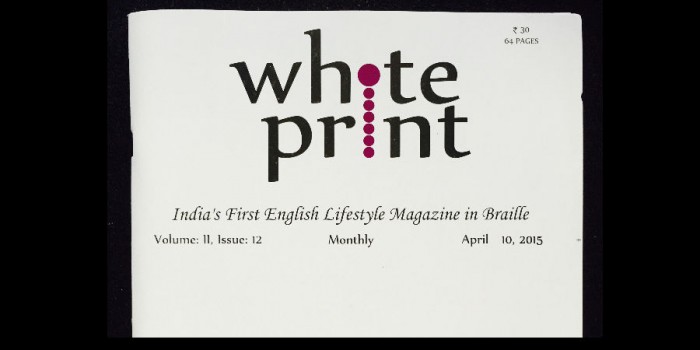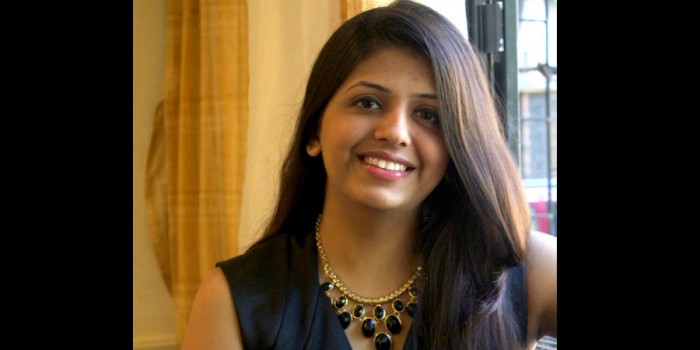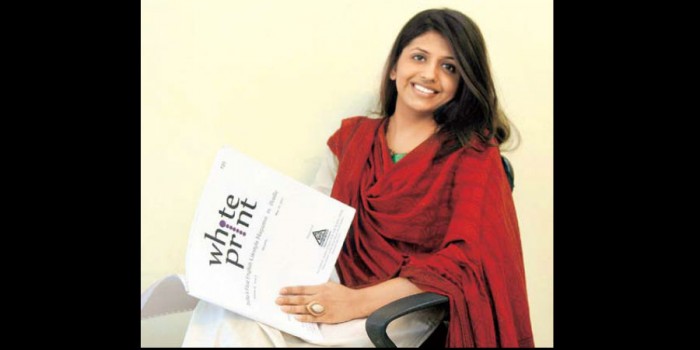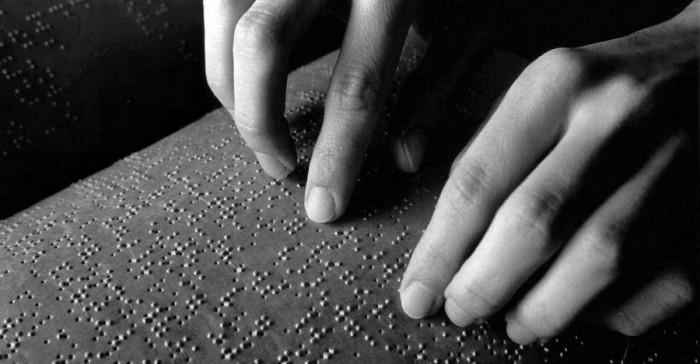Meet Upasana Makati, the visionary behind India’s first English lifestyle magazine for the blind
The only thing worse than being blind is having sight but no vision. – Helen Keller
26-year-old Upasana Makati led a normal life of a PR professional until one night she wondered how normal people had a wide range of magazines to choose from, while there was not a single one for the visually challenged.
What began as a random thought, went on to become Upasana’s vision for life!
India is home to 15 million visually challenged people of which close to 60 lakh are literate. And two years ago, Upasana began her journey to make life much pleasurable for these people by launching White Print, India’s first English lifestyle magazine for the visually challenged.
Priced at priced just Rs 30, the 64-page monthly magazine in Braille has articles on art, culture, technology, food, music and politics. The magazine that was first rolled out in May 2013 is circulated across India and printed at the National Association for the Blind.

Folomojo spoke to Upasana Makati and here’s her story.
1. Where did it all begin for White Print?
Imagine a day without a newspaper early in the morning. The breakfast table seems incomplete right? No matter how dependent we get on technology, the pleasure of physically holding and reading a newspaper, magazine or a book cannot be replaced or replicated.
White Print was born thanks to a similar thought. Year 2012 was when suddenly I began thinking about the various reading options available for a visually impaired person. To my surprise I could think of none. I immediately shared the idea with my closest bunch of friends and thoroughly began the research process. Three months into the research I decided to quit my job and commit myself completely to the venture.
After 8 months of the legal procedures to get a title, we rolled out the magazine in the month of May 2013.
2. Is there any personal reason for doing something for the visually impaired people?
A lot of people ask me this question. 23 years before White Print, I hadn’t closely interacted with even one single visually impaired person. The interaction remained only till the ‘visit to a blind school’ when I studied in school.
White Print was born out of a thought that not only surprised me, but worried me to a great extent. Somehow it was difficult for me to digest that the visually impaired didn’t have a monthly magazine of this nature in Braille that would reach their doorstep each month, be their companion while they relax or when they want to read something while they commute to work.

3. Could you highlight some of the content of the magazine.
White Print entails information related to inspiring stories of the common man, review of audio books, gadgets, travel and hospitality, short stories and food related columns. It also comprises of information pertaining to politics, art and culture from across the globe. The magazine gives the readers a slice of varied topics that they would like to read about in their leisure time and hence would interest everyone from a college student to an adult. We have a small team of writers and freelancers contributing for the magazine.
Content support from strangers who read about the venture is overwhelming. Barkha Dutt shares a political column for White Print. Sudha Murthy has been kind enough to give us rights to 12 of her short stories.
4. What were the challenges you faced and continue to face?
Well, no start up runs without challenges. Our day begins with one and ends with another hiccup. But it is a part of the process and the learning experience.
It began right from the time I decided to start the magazine. To get a title without using expert help is a tedious process. It took me three attempts, each lasting 2.5 months to get the title White Print. Also, being someone with no organization backing me, approaching and convincing companies to advertise with us was quite a task. Advertising in Braille has not been done before and hence is a challenge in itself. White Print has opened up a whole new avenue to the world of advertising. We face this challenge even till date.

6. How tough has it been to maintain such a magazine financially?
White Print is not a charity venture and hence we predominantly rely on advertising funds. Convincing companies to explore Braille advertising with us has been a great challenge. A few have believed in our concept and willingly explored braille advertising. Raymond, Coca-Cola India, Aircel, Tata have been a part of our journey so far.
7. How has your journey been so far?
Since I have ventured into an unchartered territory I have no set example that I could follow. This is interesting for me since I get to explore and evolve the magazine and the community each day. I have learnt from my interaction with White Print’s readers. They’ve taught me a lot and also made me realise how many things we take for granted.
The response from the readers of the magazine is our motivation. I didn’t know a magazine could mean so much to someone. It is overwhelming.

8. Your message for our readers
Help us spread the word and the read. Do encourage your offices/college/organization to subscribe to White Print for the visually impaired people working or studying.
Also, importantly be curious and answer your curiosity. You never know what you may be creating.
How true!
We leave you with this moving video, which aims to promote Braille literacy and help it spread to the smallest of Indian towns.
Also read
Meet Beno Zephine, the first IFS officer with 100% visual disability

OMG-inducing, share-compelling, like-attracting, clutter-breaking, thought-provoking, myth-busting content from the country’s leading content curators. read on...
